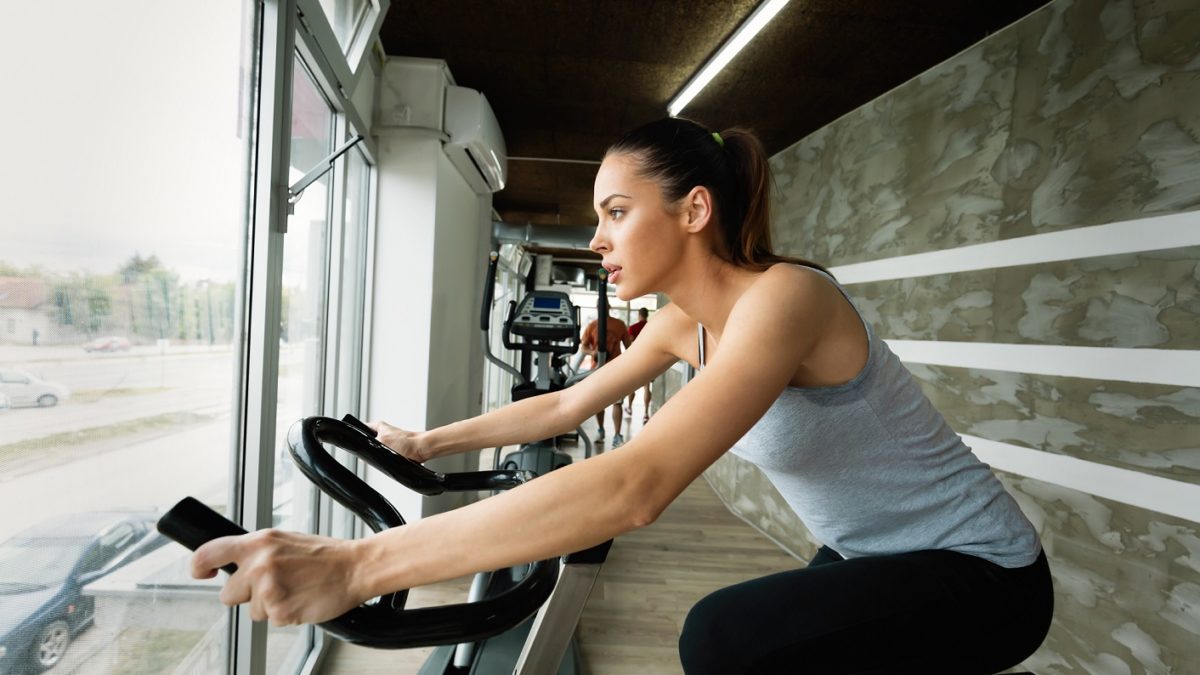Cardiorespiratory endurance assessment
Cardiorespiratory endurance is one of the most important components of physical fitness. It represents the ability to perform dynamic exercise involving large muscle groups at moderate-to-high intensity for prolonged periods. Every physical fitness evaluation should include an assessment of cardiorespiratory function during both rest and exercise.
There are many desirable outcomes from the assessment of the cardio fitness. Purely from a fitness perspective, level of cardio fitness can be used to provide motivation for an individual considering participation in a physical activity or exercise program, to individualize the exercise prescription, and to track progress within an exercise program.
Another important value of the assessment of CRF is that it directly relates to an individual’s ability to perform daily tasks. This can be demonstrated in part by comparing two individuals with high or low cardio fitness. The highly fit individual can easily perform occupational and recreational activities that require daily activities, such as carrying groceries upstairs, riding a bicycle at moderate speed, shoveling snow, or playing singles tennis. The individual with low cardio fitness will only be able to perform these same activities, if at all, with maximal or near maximal effort and will fatigue quickly. Cardio fitness, in combination with other exercise test measurements, can provide valuable clinical information, both prognostic and diagnostic, for patients with or without chronic diseases. Finally, we already covered the evidence that establishes a low level of CRF as an independent risk factor for all-cause and cardiovascular mortality and other research studies, which clearly demonstrate the importance of CRF.
The VO2max, or rate of oxygen uptake during maximal exercise, is widely accepted as the criterion measure of cardiorespiratory fitness. It is the capacity of the heart, lungs, and blood to deliver oxygen to the working muscles during dynamic exercise involving large muscle mass.
In this module we will explain tests you can use for individual or group assessment of cardio fitness.
Cardio field tests
You may use a maximal or submaximal graded exercise test (GXT) to assess the cardiorespiratory fitness of the individual. The selection of a maximal or submaximal GXT depends on:
-your client’s risk stratification (low risk, moderate risk, or high risk),
– your reasons for administering the test (physical fitness testing or clinical testing), and
– the availability of appropriate equipment and qualified personnel.
It is important to understand that by estimating O2max, there is a potential for error. Often, overestimation is more likely to occur with an exercise protocol that is chosen which is too aggressive for a given individual (e.g., Bruce treadmill protocol in patients with heart failure). Every effort should be taken to choose the appropriate exercise protocol given an individual’s characteristics and minimize handrail use during testing on a treadmill.
MAXIMAL EXERCISE TESTS
Maximal exercise testing is usually preferred when greater accuracy is needed such as elite athletes, but it can be used for recreational purpose, especially when treatment decisions will be influenced by the cardio fitness level. This exercise test method should be used for individual approach, it involves more time, expanse, and skilled personnel as well as a higher level of risk, it is not always feasible or desired. That is why we will cover submaximal test to provide estimate of cardio fitness.
SUBMAXIMAL EXERCISE TESTS
A submaximal exercise test is one that requires the client to perform a fixed amount of work per unit of time. In many cases, these tests require multiple stages or levels. The key distinguishing feature of these tests is that they limit the client’s effort to less than maximal exertion. There are several protocols that may be used to conduct a laboratory submaximal exercise test for the prediction of cardio fitness using various testing modalities, from the bench step, to the cycle, to the treadmill. Although some versions of step tests are done on individuals in a medical/fitness office setting, this form of administration is much less common than the use of the test within a field setting. Thus, the step test, as used by groups of students, is classified as a field test within our project.
PREDICTING MAXIMAL HEART RATE
A fundamental feature of many submaximal exercise tests is the reliance on knowing the clients maximal HR value (HR ). The measurement of HR requires a maximal exercise effort; thus, it cannot be obtained during submaximal exercise tests. Therefore, these submaximal testing procedures depend on the estimation of maximal heart rate, usually form the age. You have more information’s on this in our written materials.
General Procedures for Cardiorespiratory Fitness Testing
To obtain optimal results, At least 1 day before the exercise test, you should give your client pretest instructions to follow prior to performing a cardio assessment test. Clients should be instructed to wear comfortable exercise-type clothing, avoid tobacco and caffeine 3 h prior to the test, avoid alcohol 12 h prior to the test, consume plenty of fluids and avoid strenuous exercise for 24 h prior to the test, and obtain an adequate amount of sleep the night before the test.
The informed consent process should be completed, and performance instructions specific to the test should be reviewed with the client. It is crucial that the client understands that he or she is free to terminate the test at any time and is also responsible for informing the test administrator of all symptoms that might develop. Also, if used, an explanation of the rating of perceived exertion (RPE) scale is warranted at this time. This scale, developed by Gunnar Borg, is provided in the materials. Verbal directions should be read to the client prior to the test for obtaining the RPE measurement. These directions should be consistent with the recommendations of Borg.
Modified cardio test
For the evaluation of cardio fitness, we propose using a modification of graded test and step test so-called „Dunaj test“ (designed by the Fitness Index expert). The test is being used for the estimation of VO2 max.
To conduct this test you will need: standard room temperature, a stopwatch, metronome and a bench of 20 cm height.
The protocol consists of two phases (1. and 2.) and each last for 2 minutes. Phases are intercepted with a 1 min passive (standing) break when the heart rate is being measured. We advise using a heart rate monitor or if that is not an option you can measure it by palpation on the neck (carotid artery) in the 15 seconds and then multiply the number by 4 to get the 60 seconds heart rate.
In the 1. phase one steps on a bench in a rhythm of 88 steps (22 climbs on a bench) in a minute. After the 2. minutes ends, heart rate is measured.
In the 2. phase one steps on a bench in a rhythm of 94 steps (24 climbs on a bench) in a minute and after the 2. minute heart rate measurement is done again.
After the test, both of heart rate measures are put in the formula and VO2 max estimation is being calculated.
Key Points
• The best way to assess cardiorespiratory capacity (cardiorespiratory fitness) is through a GXT in which the functional VO2max is measured.
• Unless contraindications to exercise are observed, you should administer a maximal exercise test to moderate- and high-risk men and women before they begin a vigorous exercise program.
• Before, during, and after a maximal or submaximal exercise test, closely monitor the HR, BP, and RPE.
• Treadmill, cycle ergometer, and bench stepping are the most commonly used modes of exercise for exercise testing.
• The choice of exercise mode and exercise test protocol depends on the purpose of the test and on the age, gender, and health and fitness status of the individual.
• Submaximal exercise tests are used to estimate the functional cardiorespiratory capacity by predicting the VO2max of the individual. Failure to meet the assumptions underlying submaximal exercise tests produces a 10% to 20% error in the prediction of VO2max from submaximal HR data.
• Field tests are the least desirable way of assessing aerobic fitness and should not be used for diagnostic purposes. However, field tests are useful for assessing the cardiorespiratory fitness of large groups.
• Commonly used field tests include distance runs, walking tests, and step tests.
• Distance runs should last at least 9 min to assess aerobic function. Distance runs usually range between 1600 and 3200 m or 9 and 12 min.
• The validity of step tests for assessing cardiorespiratory fitness is highly dependent on obesity, height, fitness level, and the accurate measurement of HR; step test validity is usually somewhat lower than the validity of distance run tests.
• For children and older adults, select a treadmill protocol that increases grade rather than speed.
• The 6 min walking test or 2 min step test can be used to assess cardiorespiratory fitness of older adults in field settings.





